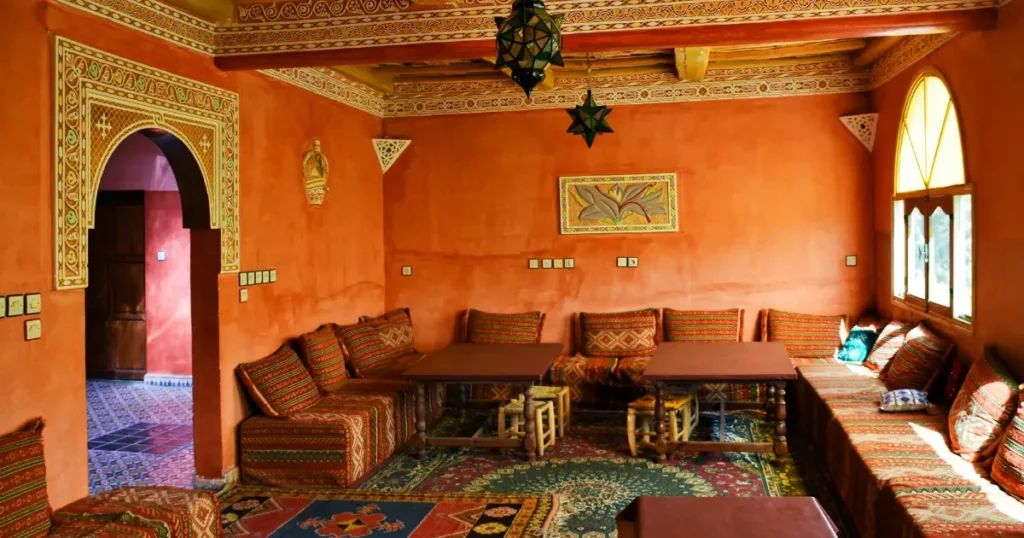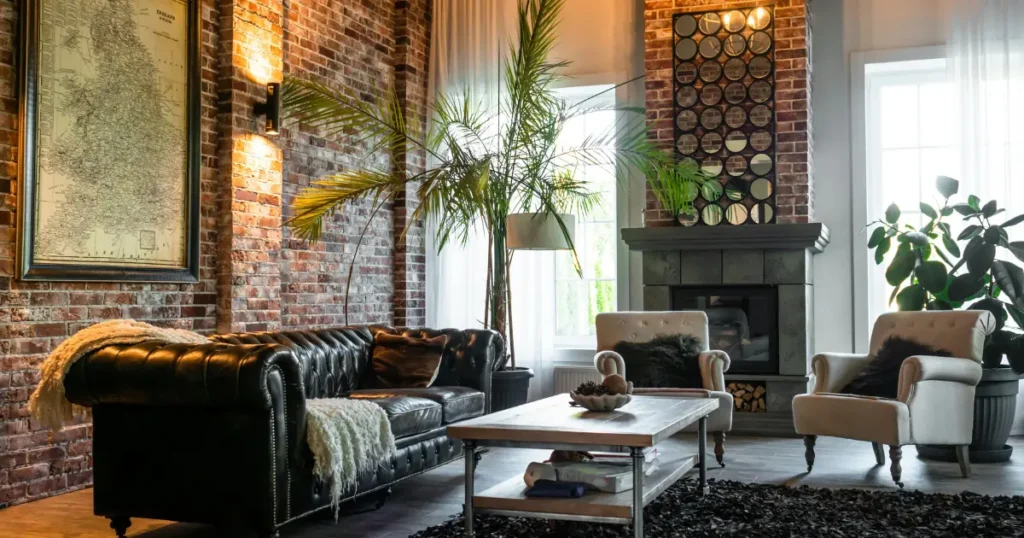Layering rugs is a trend that has taken the interior design world by storm. It’s an art form that can add depth, texture, and personality to any room. Whether you want to add warmth, create a focal point, or simply refresh your space, knowing how to layer rugs effectively is key.
In this comprehensive guide, we’ll walk you through the ins and outs of layering rugs, offering expert tips, creative ideas, and practical advice to help you achieve a stylish and cohesive look.
Why Layer Rugs?

Layering rugs isn’t just about adding more texture or color to a space—it’s about transforming a room into a cohesive, inviting area that reflects your personal style. Here’s why layering rugs can be a game-changer:
Adding Dimension and Texture
One of the primary reasons for layering rugs is to add dimension and texture to a room. By combining different materials, patterns, and colors, you can create a visually dynamic space that feels complete. The interplay of textures can make a room feel more luxurious and inviting.
Defining Spaces Within a Room
Layering rugs can help define separate areas within a larger room. For instance, in an open-concept living space, you can use layered rugs to distinguish the seating area from the dining area. This technique helps in creating zones without the need for walls, maintaining the open and airy feel of the space.
Enhancing Existing Decor
If you have a room that feels flat or lacks character, layering rugs can instantly elevate the decor. A well-chosen rug combination can tie together various elements of the room, such as furniture, wall colors, and accessories, creating a harmonious look.
Practical Benefits
Beyond aesthetics, layering rugs can offer practical benefits. For example, a softer, more delicate rug on top of a more durable one can protect the latter from wear and tear. Additionally, layering can add extra padding underfoot, making the space more comfortable and cozy.
How to Choose Rugs for Layering

Selecting the right rugs for layering is crucial to achieving a balanced and attractive look. Here’s what to consider:
Size and Scale
- Base Rug: Typically larger, the base rug should cover a significant portion of the floor to anchor the space.
- Top Rug: The top rug is usually smaller and should be proportionate to the base rug, leaving enough of the base rug visible around the edges.
| Rug Type | Recommended Size |
|---|---|
| Base Rug | At least 8×10 feet |
| Top Rug | 4×6 feet or smaller |
Patterns and Colors
Mixing patterns and colors can add visual interest to your room. Here are some tips:
- Pattern Mixing: Combine a bold patterned rug with a more subtle one to avoid visual overload.
- Color Coordination: Choose colors that complement each other or use contrasting colors for a more striking effect.
Materials and Textures
Combining different textures can create a richer look:
- Base Rug: Opt for durable materials like wool or jute for the base rug.
- Top Rug: Use softer or more luxurious materials such as shag, velvet, or silk for the top rug.
Example Rug Combinations
| Base Rug Material | Top Rug Material | Effect |
|---|---|---|
| Wool | Shag | Cozy and texturally rich |
| Jute | Silk | Natural warmth with luxury |
| Cotton | Wool | Soft and comfortable |
How to Layer Rugs: Step-by-Step Guide

Follow these steps to achieve a stylish layered rug setup:
Step 1: Prepare the Space
- Clear the Area: Remove any existing rugs or furniture from the area where you’ll be layering rugs.
- Clean the Floor: Ensure the floor is clean and dry to prevent slipping and damage.
Step 2: Lay Down the Base Rug
- Placement: Position the base rug in the desired location. It should be large enough to anchor key furniture pieces, such as a sofa or bed.
- Alignment: Make sure the rug is centered or aligned according to your room’s layout.
Step 3: Position the Top Rugs
- Centering: Place the top rug on top of the base rug. Center it or position it at an angle for a more dynamic look.
- Adjusting: Adjust the top rug so it’s evenly spaced and aligned with the base rug.
Step 4: Secure the Rugs
- Rug Pads: Use non-slip rug pads between the layers to keep them in place and prevent bunching.
- Furniture Placement: Carefully place furniture back into position, ensuring it doesn’t shift the rugs.
Step 5: Final Touches
- Add Accessories: Enhance the layered look with complementary accessories like throw pillows, blankets, or a coffee table.
- Adjust as Needed: Make any final adjustments to ensure the rugs and accessories are well-aligned and visually appealing.
Common Rug Layering Combinations

Not sure where to start? Here are some tried-and-true rug layering combinations that work in various settings:
Neutral on Neutral
For a subtle and sophisticated look, layer a light-colored neutral rug over a larger neutral base rug. This combination works well in minimalist spaces or rooms where you want to keep the focus on other elements like artwork or furniture.
Bold Over Neutral
Add a pop of color or pattern by layering a bold rug over a neutral base rug. This approach is great for adding personality to a space without overwhelming it.
Pattern on Pattern
If you’re feeling adventurous, try layering two patterned rugs. The key to making this work is to ensure that one pattern is more dominant while the other is more subdued. For example, pair a large geometric pattern with a smaller, intricate design.
Texture Play
Combine different textures for a rich, tactile experience. For instance, layer a soft, plush rug over a flat-woven jute rug. This combination adds depth and warmth, making the space feel more inviting.
Vintage and Modern Mix
Mixing vintage and modern rugs can create a unique and eclectic look. A vintage Persian rug layered with a contemporary abstract rug can add character and a sense of history to your space.
Color Coordination
| Base Rug Color | Top Rug Color | Effect |
|---|---|---|
| Beige | Navy | Elegant and sophisticated |
| Gray | Yellow | Bright and cheerful |
| Blue | Cream | Calm and soothing |
Conclusion
Layering rugs is a powerful design technique that can transform any room into a visually engaging and comfortable space. By thoughtfully combining rugs of different sizes, patterns, and textures, you can create a unique and personalized look that enhances the overall aesthetic of your home.
Key Takeaways:
Purpose and Benefits: Layering rugs adds depth, texture, and warmth to a room. It helps in defining different areas within an open space and can elevate the existing decor, making it feel more cohesive and inviting.
Selection and Arrangement: Choosing the right rugs involves considering size, color, pattern, and texture. Start with a larger base rug to anchor the space and layer a smaller, contrasting rug on top for visual interest. Experimenting with angles and adding complementary accents can further enhance the layered look.
Practical Considerations: Ensure that the rugs are suitable for their intended use. Durable materials are ideal for high-traffic areas, while softer, more delicate rugs work well in less used spaces. Rug pads can help keep layers in place and add extra cushioning.
Styling Tips: From neutral tones to bold contrasts and mixing patterns, there are numerous ways to layer rugs to suit your style. Combining different textures and materials can also create a rich, multi-dimensional effect.
By mastering the art of rug layering, you can achieve a sophisticated and stylish look that reflects your personal taste while enhancing the functionality of your space. Don’t be afraid to experiment and adjust until you find the perfect combination that works for you. With these guidelines, you’re well-equipped to create beautiful, layered rug arrangements that will make your home both stylish and comfortable.
FAQs
What Size Rug Should I Use as the Base When Layering?
The base rug should be large enough to anchor the furniture in the space. Typically, it should be at least 8×10 feet for a living room or bedroom, with the top rug being smaller to create a layered effect.
Can I Layer Rugs with Different Shapes?
Yes, you can layer rugs with different shapes. For example, a rectangular rug can be layered with a round or oval rug on top. This adds visual interest and can help define specific areas within a room.
How Do I Choose Colors for Layering Rugs?
When choosing colors, consider the existing color scheme of the room. You can either select rugs within the same color family for a cohesive look or choose contrasting colors to make a bold statement.
What Are Some Common Mistakes to Avoid When Layering Rugs?
Common mistakes include choosing rugs that are too similar in size, using clashing patterns without balance, and ignoring the room’s existing color scheme. To avoid these, ensure there’s enough contrast between the rugs and that they complement the overall decor.
Can I Layer Rugs in a High-Traffic Area?
Yes, layering rugs in high-traffic areas is possible, but choose durable materials for the base rug and a smaller, easily replaceable rug on top. Using rug pads can also help keep the rugs in place and prevent wear.
